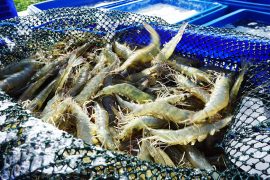
How lizards are saving Australian sheep farms
Giant lizards known as heath goannas could potentially save Australian sheep farmers millions each year by controlling blowfly populations.
A recent study from the University of Cambridge reveals that heath goannas, a species of scavenging lizards, serve as natural cleanup crews by removing maggot-infested carcasses from the environment.
This activity significantly reduces the number of blowflies, which are known to lay eggs on sheep, leading to the costly and devastating disease known as ‘fly strike.’
Focus of the research
“Human-induced environmental change has caused widespread loss of species that support important functions for ecosystems and society,” noted the study authors.
“For example, vertebrate scavengers contribute to the functional health of ecosystems and provide services to agricultural landscapes by removing carcasses and associated pests.”
“Widespread extirpation of native Australian mammals since the arrival of Europeans in Australia has removed many scavenging species from landscapes, while scavenging mammals such as European red foxes (Vulpes vulpes) have been introduced.”
Heath goannas vs. European invaders
The study was conducted at 18 sites across the Marna Banggara Rewilding Project area on Australia’s southern Yorke Peninsula.
The results highlight the effectiveness of heath goannas in controlling blowfly populations compared to introduced European species.
“We found that Australia’s native scavengers like heath goannas are much more effective in removing blowflies from the landscape than invasive scavengers like European foxes and cats,” said Tom Jameson, a PhD researcher in the University of Cambridge’s Department of Zoology.
The impact of blowflies on sheep farming is severe, costing the industry an estimated $280 million annually.
What is fly strike?
Fly strike, also known as myiasis, is a condition where flies lay their eggs on an animal’s skin or in wounds. When these eggs hatch, the larvae (maggots) burrow into the skin, feeding on the animal’s tissue. This can cause severe irritation, pain, and secondary infections.
Fly strike is particularly common in sheep and rabbits, but it can affect any animal with open wounds or soiled fur. Warm, humid conditions and poor hygiene increase the risk.
When blowfly maggots burrow into sheep, in particular, the results include painful wounds, decreased market value, reduced breeding success, and often death.
Scavenging activities of various species
Jameson’s research involved comparing the scavenging activities of various animals in southern Australia.
Hundreds of dead rats were placed at feeding stations equipped with camera traps. After five days, the remaining carcasses were examined for blowfly maggots.
The footage revealed that native scavengers consumed more carcasses and maggots than their European counterparts.
“It was disgusting – we were counting maggots. After five days we’d find over 1,000 maggots in one rat if a scavenger hadn’t found it. Those maggots produce blowflies that can spread up to 20 kilometers in a week, putting local sheep flocks at risk of fly strike,” noted Jameson.
Heath goannas and ecosystem restoration
The study underscores the importance of boosting populations of native large reptiles like heath goannas for ecosystem restoration.
“The results suggest that conservation work in southern Australia to remove invasive species should also focus on boosting the population of heath goannas and other native species because they’re really important for the wider ecosystem,” said Jameson.
Besides benefiting native wildlife, this approach could provide significant advantages for the agricultural industry and attract more wildlife tourism.
More about heath goannas
The heath goanna, also known as the Rosenberg’s monitor, is a species of monitor lizard found in southern Australia. It primarily inhabits heathlands, woodlands, and grasslands, often preferring sandy or rocky areas where it can dig burrows.
This reptile is known for its distinctive appearance, featuring a long neck, a robust body, and a powerful tail, which it uses for balance and defense.
Heath goannas are carnivorous, feeding on a variety of prey, including insects, small mammals, birds, and other reptiles. They are also known to scavenge carrion.
Active during the day, these lizards are skilled hunters and climbers, using their sharp claws and strong limbs to navigate their environment. Reproduction involves laying eggs, which are typically deposited in burrows or other protected sites.
Heath goannas are currently endangered. As one of Australia’s largest remaining native scavengers, conserving them is crucial for ecosystem health and local agriculture.
The study is published in the journal Ecology and Evolution.
—–
Like what you read? Subscribe to our newsletter for engaging articles, exclusive content, and the latest updates.
Check us out on EarthSnap, a free app brought to you by Eric Ralls and Earth.com.
—–













